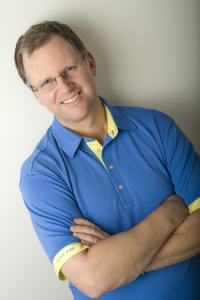
Performance Coach Paul Dewland is coaching me on the mental side of the game. He doesn't live on a mountain top, but in Mississauga, Ontario.
Paul Dewland is coaching me on the mental side of the game. For a guru, he’s a pretty funny guy. No Birkenstocks! I play most of my golf at Blue Springs GC in Acton, Ontario, just so you know where most of this little experiment is being played out. And our Club Championship is coming up August 7-8. Yes, this could get ugly.
I made it through two rounds on the weekend with only one shank.
Yes, I used the word. My brother Pat said that I was not fully facing my demon if I didn’t name it directly, so there it is: Shank.
And this is the last time I’m going to deal with the shanks.
Coach Paul says the less attention that I give to the shanks, the better. In other words, if I fixate on fixing them, I just perpetuate the behaviour that leads to them.
“Fighting the struggle makes the struggle the problem. It`s like someone who is panicking about drowning. It`s the panic that can kill you,“ he said.
“Trying to give energy to a new way is more effective. If you don`t give the old way any oxygen, it dies.“
In other words, I get better results when I focus on what I want.
And I have found that this works. Well, most of the time. For example, as I started to settle over my last iron shot of the day Saturday–an 8-iron into the 18th at Blue Springs—THAT word crept into my head, like someone had whispered it. It wasn`t `don`t freakin` shank it you dweeb.‘ It was just that nasty little word. (Sometimes, I really do think this is a mental game, the way I used to say it in Grade 4. “You`re mental!“)
I did not get an emotional charge about it, tense up, or do anything differently. I went through my routine exactly as I had all through the round, took one last look at the flag, brought my eyes back to the ball, and with the image of the flag in my mind`s eye, and the feeling that it was in front of me, I swung. I flushed a tight draw right at the pin to within about 12 feet. Sweet!
Paul said this is prime example of “target absorption.“ We have not talked much about it yet, so I`m keen to hear more about it.
But to me it was like I over-rode the gremlins screwing around in the back of my brain, like I heard them rattling around but I just went on with my business anyway. My mind focused on each little move as I progressed through my routine, including an image of the ball heading straight to the flag. It was like I didn`t give the little buggers any time to sabotage me.
Yet on Sunday, I hit a shank from nearly the same spot as Saturday. I was really frustrated by my game, feeling uncomfortable over the ball… and whammo!
So it`s obvious that as golfers we`re never truly cured of our afflictions, the same way we never completely exorcise addictions and bad habits. Like gremlins, they hide deep in our brains, and we are aware that they are hiding back there. We know this because when we`re feeling stressed, it`s like they sneak out again, yell “Booga! Booga!“ and challenge us to deal with them, yet again.
But that’s it. I’m done thinking and moaning about the unmentionables, hosel rockets, shanks, whatever.
Paul notes that most people who successfully change a habit do not focus on it daily, and that many do not have a big deal ceremony like `this is my last cigarette, EVER!` Some might, but the key point is that those who do make changes move on, work through the uncomfortable times, talk to friends or family when they feel stressed, and hold fast to their resolve.
For me, I’m hoping that one day I’ll realize ‘I haven’t thought about that for a while.’ It doesn`t mean that the fear isn`t there, but I’ll know that I`ve moved on.
“It’s in those moments, that we realize that we’ve changed our behaviour,“ Paul said.
